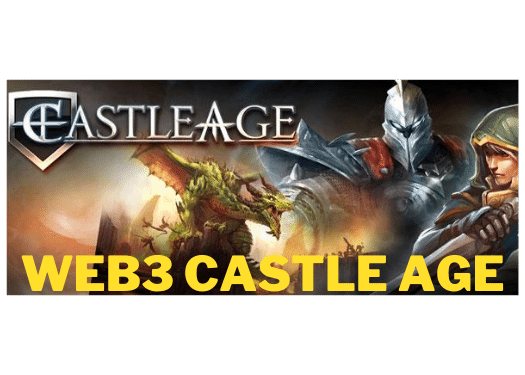Web3 is transforming the Internet and rolling worldwide by establishing certain beliefs about decentralized technological architecture. It is a multi-dimensional tool that allows developers to introduce new data storage and management methods. Along with emerging brands, established businesses like Microsoft and Google have also entered web3 development quite aggressively, accounting for its rapid growth in the industry. But what is web3, and how will it evolve from the traditional infrastructure built over years of development and experience? We will break down the development of the Internet from the first-generation web to the existing web2 infrastructure and the currently developing web3.
Let’s get started!
History of Web3 Evolution

Web 1.0 was the first generation of the Internet, and it marked the beginning of a change that would revolutionize the world. At that time, the Internet was primarily used to exchange text-based information between different parties. However, there needed to be more focus on securing the data or determining ownership.
Web 2.0 emerged later and brought with it new ideas of personalization and customization. This generation introduced social media platforms, online games, and web and mobile applications, among other things. It also ushered in the concept of having a central authority that controlled the functionality of these applications. Nevertheless, there were concerns related to data security, intermediaries, centralized control, and other issues.
Then came Web 3.0, which marked the third generation of the Internet.
In the early development days, due to ignorance of Web 3.0, it was considered a blockchain, and blockchain was considered a cryptocurrency like BTC, ETH, SOLANA, and others. However, users realized the crypto vertical is a mere use-case of blockchain technology, and web3 is more of a new generation of the decentralized Internet.
Are Web3 and Web 3.0 similar?
Many people nowadays need help to differentiate between web3 and Web 3.0. While these two terms are not entirely interchangeable, it would be inaccurate to claim that they are wholly distinct from each other. Web3 refers to the decentralized version of the web that leverages blockchain technology to operate.
Web 3.0 is the original Semantic Web, envisioned by Tim Berners-Lee. The development of Web 3.0 requires the application of key technologies like the Semantic web, Artificial Intelligence, and Natural Language Processing. These three technologies are often referred to as the “three pillars” of Web 3.0. Additionally, web 3.0 is characterized by features such as connectivity, ubiquity, edge computing, and 3-D graphics.
We hope that the above explanation clears up any confusion you may have had between web3 and Web 3.0. If you still have any doubts, check out our comprehensive web3 education courses for a more in-depth understanding.
Who Will Benefit Most from Web3?
Web3 is an upgraded version of the Internet that promises to provide more autonomy and better control over personal data to users. It democratizes access to digital resources, giving creators, developers, and consumers an equal opportunity to use them. This means that people who were previously excluded from using these resources now have access to them.
Using Web3 in Business Marketing
Businesses can benefit from Web3 by using decentralized platforms to engage with customers. By using blockchain-based social networks and Non-Fungible tokens (NFT) marketplaces, companies can create deeper connections with their audience. Smart contracts can be integrated into loyalty programs to automate rewards and improve customer retention and trust.
Some examples of pioneering Web3 companies include Decentraland, which is a virtual world where users can buy, sell, and create content and applications. Audius is a decentralized music streaming platform that ensures fair compensation for artists while allowing direct interactions between creators and fans. Rarible is a marketplace for digital collectibles, art, and unique digital assets.
Urbit is another Web3 adjacent platform that seeks to reinvent personal computing and online identity. It empowers individuals with their servers, allowing them complete ownership and control over their digital presence. Urbit emphasizes simplicity and security and uses a unique programming language called Hoon, which allows for the creation of secure and reliable applications.
Web3 represents not just a technological advancement but a call for a more equitable and user-centric internet. By embracing Web3, businesses can gain a competitive edge and reshape how value is created and distributed in the digital age.
Future Web3 Trends

What do you think of when you hear about the future of web3? Is it Metaverse, cryptocurrency, or decentralized applications? We have compiled a list of key trends that illustrate what the future of web3 will look like.
Metaverse
The Metaverse, an emerging web3 and blockchain product, is replete with potential use cases spanning education to gaming. A confluence of critical technologies such as AR/VR/MR/XR and blockchain creates a novel virtual realm with 3D rendering of real-life objects and situations. Industries such as education, healthcare, gaming, and real estate, among others, are poised to undergo significant transformations with the advent of Metaverse. As of 2021, Metaverse’s global market revenue stands at USD 58 billion. Industry experts and surveys conducted by reputable firms suggest that it will see a Compound Annual Growth Rate (CAGR) of 43%, culminating in a market capitalization of USD 1,525 billion by 2030.
NFTs
NFTs are digital tokens that cannot be exchanged for other tokens. They are the most popular and sustainable product of web3. Famous companies and celebrities such as Warner Brothers and Meta use NFTs. NFTs proved their worth by surviving the crypto winter, which caused the value of crypto to crash. According to surveys and market insights firms like Forbes, NFTs are expected to grow in the coming years. By 2030, it is estimated that NFTs will have a market capitalization of 231 billion USD.
SocialFi
It has been reported that SocialFi is an emerging market for decentralized social media platforms. According to recent news, Jack Dorsey, the co-founder of Twitter, has announced that his team is working on building the first-ever decentralized social media platform that will be controlled solely by its users. This platform is expected to be free from any influence from corporate or government institutions. It will operate on DAO-powered intelligent contracts built on blockchain. Currently, Bluesky, the first social network built on blockchain, is under beta testing and is expected to take over the centralized social media marketplaces shortly.
Smart Contracts
Intelligent contracts are fundamental to any DAO-based application. They provide the core functionality of a decentralized autonomous organization built on blockchain. These contracts consist of a set of conditions that, when fulfilled, trigger an action specified at the time of development. Because the foundation of smart contracts is built on blockchain technology, it is impossible to modify them after development to favor any particular condition or individual. Therefore, they represent the ideal use case for this technology.
dApps, DeFi
Decentralized applications and Decentralized finance are two new types of software built on web3. They are expected to change the current web2 infrastructure by offering secure and transparent applications without a central authority controlling them.
Decentralized applications do not need anyone to control how they work, which means that individuals can use them without worrying about a central authority. Additionally, these applications use blockchain technology, which ensures that personal data is secure and cannot be stolen. Every transaction is recorded on a distributed ledger, making it difficult to tamper with data.
Recently, JP Morgan, a large multinational bank, successfully tested their DeFi Trade and is planning to scale DeFi solutions globally.
Why should you be worried about web3 scaling?
The pace of web3 scaling is a concern that businesses and professionals should take seriously. The adoption of web3 solutions is gaining momentum, and this requires individuals with the necessary skills to transition from web2 to web3 ecosystems. As a result, the demand for web3 and blockchain professionals is on the rise, while the demand for web2 professionals is dwindling.
Businesses are keen to embrace decentralized applications and are actively seeking web3 and blockchain experts. At Blockchain Council, we offer comprehensive courses and certifications to help individuals understand web3 and blockchain in a way that enables them to develop scalable solutions for businesses. Our courses are designed to facilitate a smooth transition to web3 and to equip individuals with the necessary skills to become experts in this field.
Now is the time to embrace this change and learn blockchain with the Blockchain Council. Our courses are easy to learn and well-organized, and they offer an excellent opportunity to become a web3 expert. By earning a web3 certification from the Blockchain Council, you will be well-positioned to meet the demands of the industry and become a sought-after professional.
If you want to keep up with the trends of the blockchain industry click here
How Will Web3 Ensure User Privacy?

The way the Internet currently works needs to be improved to ensure that user privacy is protected in web3. Companies need to build healthier relationships with their users and introduce fundamental changes. In web2, users had concerns about data ownership and security, which impacted their privacy. We need to examine how web3 could help address these concerns and enhance user privacy.
Data Ownership
Web3 is a technology that utilizes blockchain to optimize user experience by giving users control over their data. This technology ensures that the Internet runs on a peer-to-peer network of nodes. The publicly accessible distributed ledgers with blockchain could ensure better transparency for users. Users could check vital data records and their verification within a few simple steps. As a result, users could gain ownership of their data, including social media posts, online activity, and contacts.
The element of data ownership in web3 leads to explicit user content. Web3 data privacy would focus on ensuring that no platform could access or share user data without their permission. Users could access their data across different platforms without the need to re-upload or re-post the data. Therefore, the improvements in data ownership and control could have positive implications on user privacy for future web3 users.
Incentives in Web3 Ecosystem
Blockchain networks have been exploring the use of incentives to ensure data privacy. In a peer-to-peer network like blockchain, all participants play a critical role in maintaining the ledger and powering the network. Suppose you’re wondering how web3 can protect privacy. In that case, there are examples of blockchain networks that use incentives to encourage network participants to act fairly and transparently.
These incentives are rewards for good behavior, while penalties could be imposed on violators based on pre-defined roles. One of the significant examples of implementing such incentives is DAOs or Decentralized Autonomous Organizations. These organizations have decentralized governance that ensures all community members follow the rules for safeguarding user privacy.
Safety for Digital Identities
The integration of AI with KYC technologies in web3 can enhance identity verification procedures, which can help companies employ automated regulatory search engines. These search engines could enhance web3 data privacy by analyzing digital footprints, filtering sensitive keywords, and conducting background research in real time. Web3 can offer a solution to identity theft, which has caused losses of almost $52 billion in the United States alone, thereby safeguarding user privacy.
Smart Contracts and Data Ownership
One way to ensure ownership of data is through blockchain. This technology can also be used to protect privacy in web3 through the use of smart contracts. By encoding asset ownership on smart contracts, users can prove ownership of digital and virtual assets. Smart contracts can also streamline the process of virtual asset ownership by ensuring their immutability. For instance, NFTs are a great example of using smart contracts to prove ownership of digital assets.
The bottom line
Imagine a digital world where your data is not controlled or curated by major tech companies and where your online experiences are not dictated by their algorithms. With the growing adoption of Web3, we may witness a paradigm shift in the modern Internet landscape, opening up new opportunities for innovation, collaboration, and financial empowerment.
Although we are still in the early stages of Web3 creation and adoption, the potential of this emerging technology to revolutionize the economy is undeniable. Investors who are responsible and forward-thinking should consider the many potential impacts of Web3, as it could become the future of all things financial.




[…] Evolution of Web Technologies and Their […]
[…] to the digital art gallery of Web 3.0, where NFTs (Non-Fungible Tokens) are the VIP passes. Picture this you’re not just admiring […]
[…] ID is a decentralized identity toolset for Web3 – It provides the toolset to secure the chain of trust from credential issuers (sources of […]
I’m impressed, I must say. Rarely do I come across a blog that’s equally educative and amusing, and let me tell you, you’ve hit the
nail on the head. The issue is something too few people are speaking intelligently about.
I’m very happy I stumbled across this in my search for something concerning
this.
Your satisfaction is our pleasure. Don’t have a good day Have a Great day.